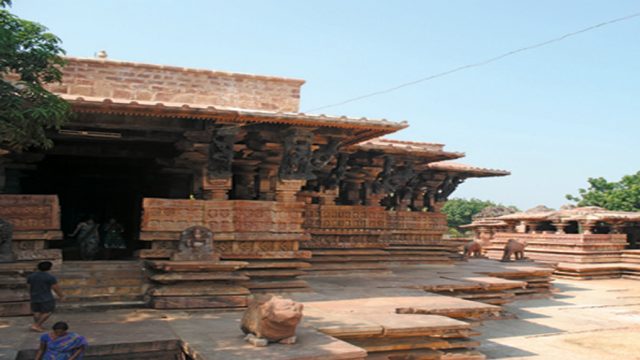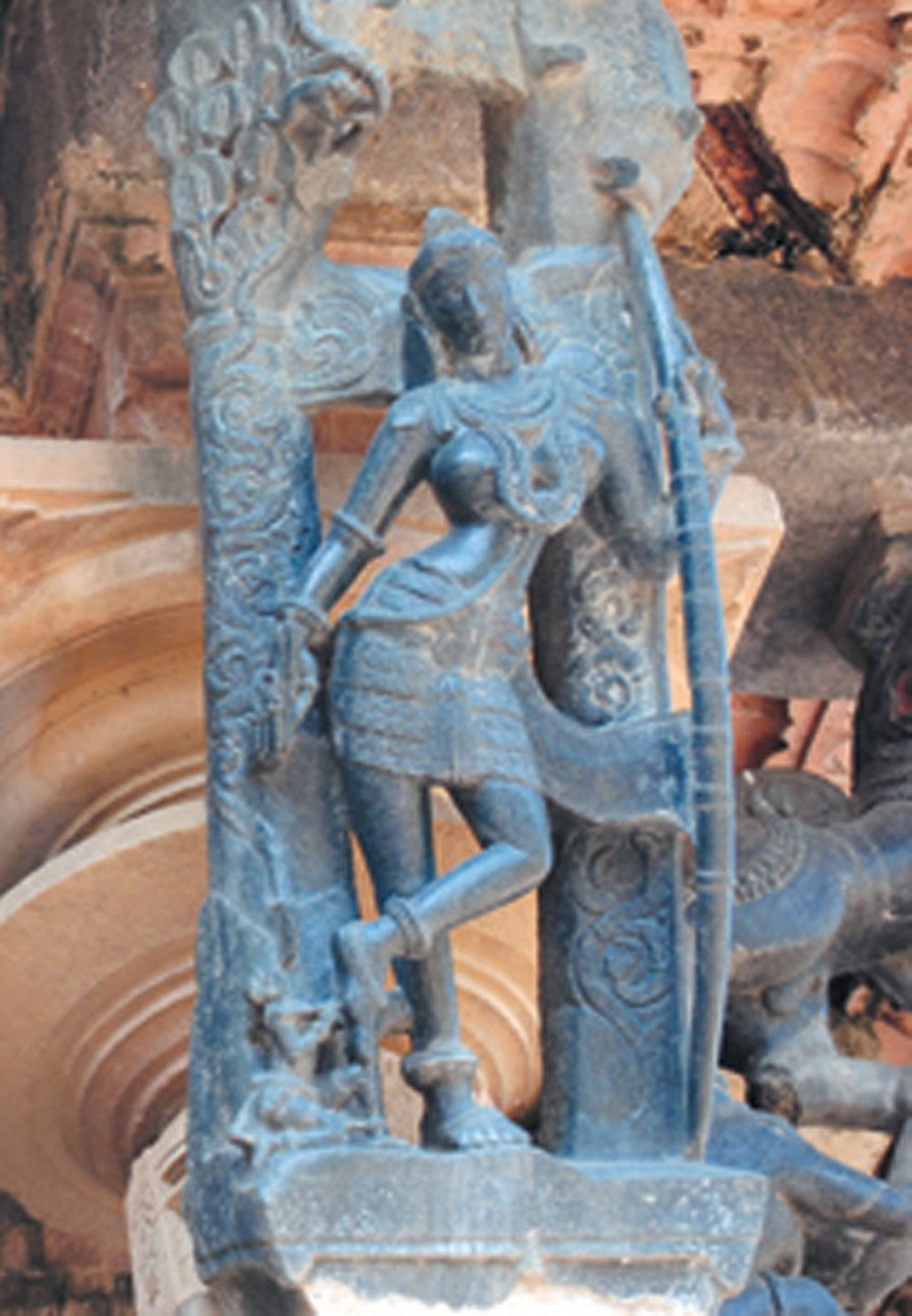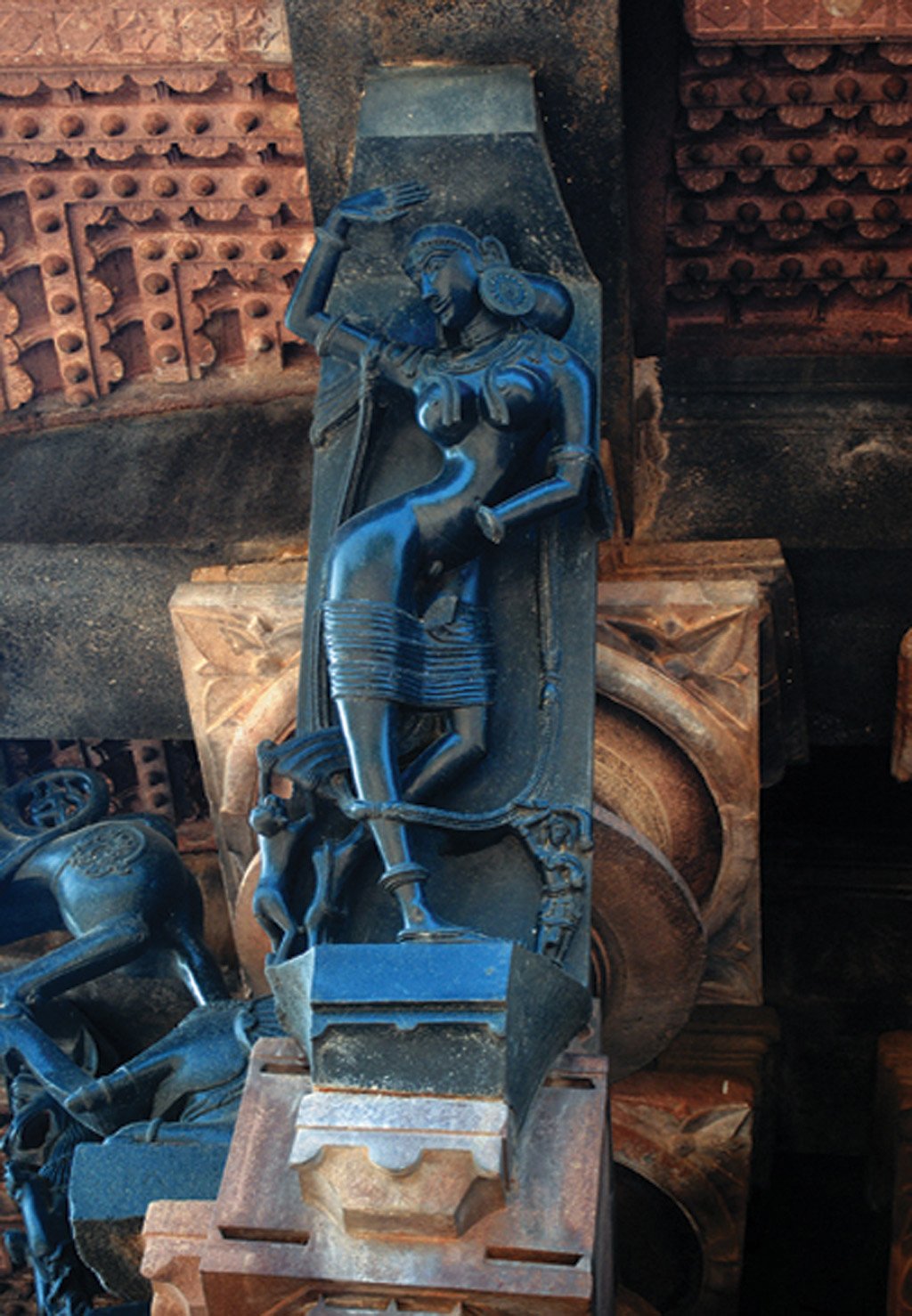Palampet is actually a sleepy hamlet that seems oblivious to the treasure trove that it houses in the form of the Ramappa Temple, which is considered the finest piece of Kakatiyan architecture. To many, the temple and its visitors are primary means of livelihood. Close to Palampet is the lesser known Ghanpur Group of temples. Some of the finest examples of Kakatiyan architecture and infrastructure can be seen in Palampet and its surrounding areas. Other than some majestic temples, the Kakatiyas also constructed several beautiful lakes and reservoirs that aid in irrigation till today.
The Eturnagaram Wildlife Sanctuary, which has one of the thickest forest covers in the state, is also located close to Palampet. Near the sanctuary lies the Samakka Sarakka Temple where the biennial tribal fair of the same name is held. It is a good idea to speak to locals and check with tourism offices in Warangal before you head to Palampet, otherwise there is a good chance you may get lost or miss out on some beautiful sites.
ORIENTATION
Palampet is towards the northeastern side of Warangal. One might have to hire a taxi from Warangal to cover the entire circuit here. Alternately, buses ply from Hanmakonda bus stand to Palampet, but take them if the Ramappa Temple is the only thing on your itinerary. A little before Palampet, on the Hanmakonda-Parkhal Road, are the Pandavula Guhalu (Caves of the Pandavas), which have several ancient paintings. Ahead is the lesser-known Ghanpur Group of Temples. Beyond these temples lies Palampet. There is also the Ramappa Lake here. To Palampet’s east are several other lakes such as Laknavaram and Pakhal. Further ahead is the Eturnagaram Wildlife Sanctuary; a diversion to Medaram, before the sanctuary begins, will take you to the Samakka Sarakka temple. The facilities available in this area are very limited. Hence, it is best to carry your own food and water.
THINGS TO SEE AND DO
The Ramappa Temple in Palampet is the important destination here. Other than that, there are a few other temples, lakes and wildlife sanctuaries, which are worth visiting in the surrounding areas.
- Madanikalu at the entry points of the main mandapam of Ramappa Temple
Ramappa Temple
After entering the Ramappa Temple complex, you might wonder why this exquisite piece of architecture doesn’t attract more visitors or is not as well-known as it should be. However, the lack of many people is a blessing, which lets you explore the temple’s architecture in peace. The construction of the temple started in 1173 CE and finished in 1213 CE during the rule of Kakatitya king Ganapathideva. Army general Rechella Rudraiah supervised the construction activity, which lasted 40 years. According to popular belief, the place derives its name from Ramappa, who was supposedly the architect of the temple. However, there is no historical evidence to authenticate this claim. The temple is also known as Rudreswaralayam, named after the resident deity Rudreswara.
There are several elements in this temple’s architecture that make it unique. There are 12 black stone statues of madanikalu (dancing figures) perched atop pillars at the entrances to the main mandapam (pavilion). The facial expressions and body postures of the madanikalu are carved with great attention to detail – a monkey is seen pulling one madanika’s sari, another’s facial expression depicts anger, one madanika is shown wearing high-heeled shoes, one wearing just ornaments instead of clothing, an elaborate hair style can be seen on one and yet another is of a tribal woman who is hunting.
This particular temple has a gopuram, which is not a common sight in other Kakatiya temples. The gopuram is made of bricks and supposedly has the capacity to float in water. The temple itself is built on a sandstone box, which keeps it from sinking during earthquakes. The outer walls of the main mandapam have intricate carvings of elephants, Egyptian pharaohs, stars (design of Kakatiya temples) and Jain tirthankaras amongst others. There are 526 elephants carved on the outer walls of the temple, each one depicting a different position; this was done to acknowledge the contribution of elephants in building the temple and transporting the granite stone. You can also find carvings and statues of the Kakatiyan emblem Gajakesari (elephant and lion) on the walls and pillars here.
The walls of this temple also depict smaller madanikalu in 60 different dancing positions. In the year 1983, dance guru Nataraja Ramakrishna carefully studied the positions of all these madanikalu and revived the Perininatyam, a lost dance form, which was once practiced by the Kakatiyas. It used to be performed in times of war to motivate the army. Today, the dance form comprises fierce movements, relating more to the tandava element rather than the graceful lasya.
The sanctum sanctorum of the temple has a shivalinga, which has light shining on it throughout the day due to the reflection of light from the pillars of the natya mandapam in front of it. The natya mandapam has intricate carvings of scenes from Hindu mythology – ksheera sagara mathanam (churning of the milky ocean), gopika vastrabharanam (Lord Krishna stealing gopikas’ clothes), Shiva Parvati kalyanam (wedding ceremony of Shiva and Parvati) and Daksha samharam (killing of Daksha) amongst others. Outside the main mandapam are the Nandi mandapam and the smaller Kateshwaralayam, upon which the main temple was modeled. There is also a small kitchen within the temple complex.

Some statues and parts of the temple may appear slightly damaged because they were destroyed by the army of the Delhi Sultanate. After the decline of the Kakatiya dynasty, this temple remained unattended for about 550 years and faced unaccountable thefts. The Asaf Jahis who came to power in 1724 discovered this temple in a dilapidated condition and built support pillars and walking paths to conserve it. Currently, the temple is protected by the ASI. There is no one around the temple to tell you more about its history. You have to ask around for a guide or alternately call Vijay Kumar (Cell: 09390088222), who has a treasure trove of information about the site.
Ramappa Lake
Close to the Ramappa Temple is the Ramappa Lake, which was constructed by the Kakatiyas as part of their 3Ts strategy of urban development. The strategy involved the building of a town, temple and tank each, in several pockets across their kingdom. This artificial lake, spread over an area of 82sq km, is surrounded by lush greenery and hills. The lake is vast and placid and there is a watchtower here, which is not always accessible. Telangana Tourism has a resort here where you can stay to enjoy a quaint lake-side holiday.
WHERE TO STAY AND EAT
There is no place to stay in Palampet except for the Haritha Lake View Resort (Cell: 09912367152; Tariff: ₹1,400–1,700) in Ramappa near the Ramappa Temple. Situated by the lake, it has eight cottages and a restaurant offering vegetarian buffet meals on weekends and a la carte meals on other days. Non-vegetarian meals can also be served on prior notice.

There are many small eateries around the lake and the temple, serving idli, vada, dosa and south Indian meals.
AROUND PALAMPET
Ghanpur Group of Temples (9km)
If you do manage to find this beautiful set of temples, it’s likely you will be the only one there. Located just before Palampet, on the way from Hanmakonda, this temple is in the Ghanpur village where the prime occupation seems to be toddy extraction from palm trees. Upon crossing the village and entering the temple area, you will find a beautiful albeit neglected temple. Locally known as Kotagullu, construction of this temple was commissioned by Pedda Ghanpu Reddy in the 13th century. The Delhi Sultanate attacked the Kakatiya kingdom in 1323 and plundered the temple. Ever since, no real restoration work was done on this temple.
The temple has a main mandapam and many statues and carvings similar to the ones in Ramappa, although they are not as graceful. There are 22 smaller shrines surrounding the main mandapam. These shrines, similar in size, vary in their style of gopuram – one follows the Jain tradition, another the Shaivite, etc.

Pandavula Guhalu (16km)
While conducting research at a thickly forested hillock at Narsapur village in Warangal District, archaeologists discovered some extraordinary murals in the caves here. There are paintings of Lord Ganesha, Shiva, Vishnu, Hanuman and Saraswati, which date back to the 9th and 10th centuries CE. According to a legend stemming from the Hindu epic Mahabharata, Pandavas resided in these caves during their exile period, hence giving them their name – Pandavula Guhalu (Caves of the Pandavas). Currently, there are no proper facilities available here. The Telangana Tourism Department is coming up with a Haritha Hotel opposite the entrance of the caves.
Location Turn into Jubilee Nagar Road on the Parkhal-Hanmakonda main road
Laknavaram Lake (29km)
The road to Laknavaram Lake winds through several small hills from where you can catch an occasional glimpse of the water body. The seemingly endless lake is spread over an area of 10,000 acres and has about 13 small islands scattered across it. This natural lake was discovered by the Kakatiyas who constructed a sluice gate to control the flow of water and irrigate paddy fields near by.
There is a suspension bridge that connects three islands of the lake, the last of which has the Haritha Resort. Walking on the suspension bridge is an exciting experience in itself as it moves and gives you the jitters every time someone gets on to it. Boating facilities are also available from here.

Haritha Lakeview Resort (Cell: 07032696174; Tariff: ₹1,500–1,700) offers seven rooms, a beautiful restaurant and a children’s park.
Entry ₹10
TIP Outside food not allowed
Pakhal Lake (62km)
Excavated by Kakatiya rulers in the 13th century CE, the Pakhal Lake is surrounded by wooded hills. There is a Forest Department guest-house located on the shore of the lake. Surrounding the lake is the Pakhal Wildlife Sanctuary, which is home to the tiger, leopard, panther and sambar. It is also hosts several migratory birds here in winter.
Eturnagaram Wildlife Sanctuary (78km)
Although the Eturnagaram Wildlife Sanctuary and its environs seem perfect for wildlife spotting, the likelihood of spotting animals is very low. The reserve covers an area of 806sq km, and has the Godavari river passing through it. Rich in biodiversity, the sanctuary has various species such as wolf, tiger, panther, black buck, spotted deer, nilgai and chinkara. However, the only thing you may spot here are monkeys. The most prominent flora found in the reserve is deciduous teak. There is a Divisional Forest Office near Eturnagaram village.
Twenty-four kilometers before the sanctuary is the village of Medaram where the bienniel Samakka Sarakka Jatara (see p66) is held.
TIP Stay away from monkeys as they may attack you for food
The Forest Wildlife Management offers Forest Cottages at their Eco Tourism Centre in Tadvai. There are two suites and dormitories, which can accommodate 10 persons. Meals are provided on request. Currently, the place is open for day visits only as it is being refurbished. It will be open for night stays in the near future. Bookings can be made through the Forest Range Officer at Tadvai (Cell: 07382619370/ 80; Tariff: On request).
FAST FACTS |
When to go October to March is the most comfortable time for travel. However, the Eturnagaram WLS is open throughout the year but June–November is the best time to visit |
Tourist/ Wildlife Offices |
Central Reservations Office Department of Tourism Telengana Tourism NSF Shakar Bhawan Opp Police Control Room Basheer Bagh Hyderabad Tel: 040-2980140, 66745986 Cell: 09848540371 Fax: 23298455 |
Forest Range Officer Forest Wildlife Management Tadvai Range Cell: 07382619370/ 80 District Forest Officer Warangal Tel: 0870-2431546 Cell: 09440810094 STD code 08685 District Warangal Location To the northeast of Warangal city, near Mulugu Distance 205km NE of Hyderabad; 77km NE of Warangal Route from Hyderabad Take NH 202 to Hanmakonda; take Hanmakonda-Parkhal Road |
GETTING THERE |
Air Nearest airport: Rajiv Gandhi International Airport at Hyderabad is 205km/ 3–4hrs from Hanamonkda your turnoff point for Palampet. It’s best to hire a taxi from Hyderabad directly to Palampet. (State transport department taxi charges ₹1,800/ 80km, plus ₹15 per km extra for outstation hire) |
Rail Nearest rail: Kazipet Jn 68km from Palampet is served by plenty of trains from Secunderabad/ Hyderabad; important trains include the Mugur Express, Golconda Express, Satavahana Express, Krishna Express and Godavari Express. Taxis can be hired from Warangal to Palampet; negotiate rates according to the route you opt for |
Road Follow NH 202 from Hyderabad to Hanamokonda via Ghatakesar, Bibinagar, Jangaon, Raghunathapally and Kazipet the nearest rail head. From Hanamkonda head for the Hanamkonda-Parkhal Road for Palampet. The turnoff for Palampet is Myalaram. Taxis are available for hire only at Warangal, unless you want to take an express bus from Hanamkonda upto Chalwai village,from where you can hire an auto (10km/ 20min/ ₹150– 200) to Laknavaram where Haritha Hotel is a stay option for Palampet |
Bus Several direct (AC) express buses from ply from Hyderabad’s MGBS and Uppal Bus Stand to Hanamkonda. Time taken is about 3 hours and the fare ₹210–220. |






